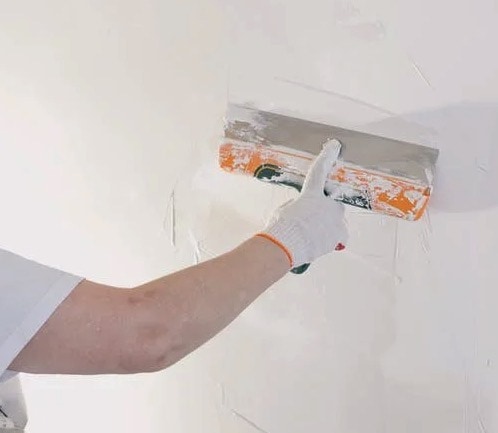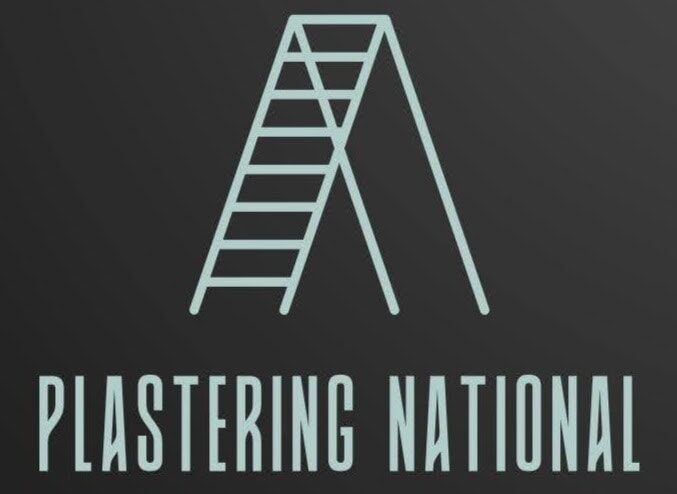Plastering plays an important role in the final look and durability of any building, and selecting the right type can make a significant difference. Today, the two most common types of plaster in the construction industry are ready-mix plaster and conventional plaster.
While both serve the same purpose, they vary in composition, ease of use, and overall performance.
Let’s get straight to the point.
Ready-mix plaster offers greater consistency, durability, and ease of use compared to conventional plaster. It’s a pre-mixed formula of cement, fine sand, and polymer additives that requires only water before application.
Ready-mix plaster saves time, reduces labour, and produces less waste, making it cost-effective for modern construction. In contrast, conventional plaster, made by mixing cement and sand on-site, is more labour-intensive, prone to inconsistencies, and takes longer to cure.
While traditional plaster may still be used in some cases, ready-mix plaster is generally a more efficient and reliable option.
What Is Ready Mix Plaster?

Ready-mix plaster is a premeasured and pre-blended formula that combines cement, fine-graded sand, polymer additives, and sometimes other materials. It is used immediately after adding water in the right proportion.
It is ideal for plastering, masonry, and pointing applications. The formula’s inclusion of polymer-based additives enhances the plaster’s bond strength, durability, and resistance to weather conditions such as heat, rain, and humidity.
What Is Conventional Plaster?
Conventional plaster, also known as cement sand plaster, has been the traditional method for centuries. It is made by mixing cement, sand, and water in specific proportions on-site.
While it is a tried-and-tested technique, it requires more labour, careful attention to material quality, and precise mixing ratios to ensure an even finish and long-lasting performance.
Key Differences Between Ready Mix Plaster And Conventional Plaster
1. Composition And Materials
- Ready-Mix Plaster: Ready-mix plaster contains high-quality Portland cement, fine sand, fly ash, and various polymer additives.
These additives help improve the plaster’s water retention and adhesive properties, resulting in better bonding and durability. Because the mixture is pre-blended, the ingredients are measured accurately, reducing the likelihood of inconsistencies.
- Conventional Plaster: This is made by manually mixing cement and sand at the construction site. This process requires careful attention to ensure the right ratios.
Still, it is challenging to guarantee consistent quality because sand sourced from different suppliers may vary in grain size and composition.
2. Ease Of Application
- Ready-Mix Plaster: One major advantage of ready-mix plaster is its ease of use. Once the water is added, the mixture is ready for immediate application, eliminating the need for labour-intensive on-site preparation.
The polymer additives also improve the plaster’s workability, making it easier to apply and resulting in a smoother, more even finish.
- Conventional Plaster: This requires mixing the materials on-site, which is time-consuming and prone to quality variations.
The application process is slower, and manual mixing often leads to uneven proportions, which can affect the consistency and strength of the plaster.
3. Strength And Durability
- Ready-Mix Plaster: By adding additives like waterproofing agents and fibres, ready-mix plaster offers superior strength and durability. These additives ensure the plaster is resistant to cracking, debonding, and environmental factors like moisture, heat, and cold.
- Conventional Plaster: While cement sand plaster can be durable, its quality is highly dependent on the materials’ quality and the mixing process’s accuracy. Poorly graded sand or incorrect mixing ratios can lead to cracks and uneven surfaces over time.
4. Curing Time
- Ready-mix plaster: Curing is the process by which the plaster hardens and gains strength. Because it contains polymers that help retain moisture, ready-mix plaster typically has a faster curing time, taking about 3 to 4 days.
- Conventional Plaster: Conversely, conventional plaster takes longer to cure, often requiring seven days or more. The extended curing period can delay subsequent construction activities.
5. Waste And Environmental Impact
- Ready Mix Plaster: Ready-mix plaster generates less waste, as the ingredients are pre-mixed and delivered in pre-measured quantities. This reduces the need for on-site handling and storage, leading to less material wastage and a smaller environmental footprint.
- Conventional Plaster: The manual preparation of conventional plaster often results in significant material waste, particularly sand. The on-site mixing process can also contribute to environmental pollution due to dust and debris.
6. Cost Implications
- Ready-mix Plaster: Due to its pre-blended nature and the inclusion of high-quality materials and additives, ready-mix plaster may initially appear more expensive. However, reduced labour costs, quicker application time, and lower material wastage often result in overall savings in the long term.
- Conventional Plaster: While the raw materials for traditional plaster (cement and sand) may be less expensive, the labour-intensive process, extended curing time, and potential for waste can increase the overall cost of a project. The long-term maintenance costs may also be higher due to the potential for cracks and other defects.
Benefits Of Ready Mix Plaster
1. Consistency In Quality
Ready-mix plaster offers a consistency that is difficult to achieve with traditional plaster. Since the materials are pre-mixed in controlled conditions, the chances of incorrect proportions are eliminated, resulting in a uniform finish across the entire project.
2. Time-Saving
One of the most significant advantages of ready-mix plaster is the time saved during application. Unlike conventional plaster, which requires significant preparation and curing time, ready-mix plaster can be applied directly after mixing with water and cures in 3-4 days.
This faster application and curing process can help speed up construction timelines.
3. Less Labour-Intensive
Since ready-mix plaster is pre-blended and easy to apply, it requires less labour than traditional plastering methods. This can significantly reduce labour costs, making it a more efficient option for small and large projects.
4. Reduced Waste
With ready-mix plaster, there is little to no waste of materials, as the mixture comes pre-measured and ready to use. In contrast, conventional plastering often leads to material wastage, particularly with sand, which can spill or become contaminated during mixing.
5. Enhanced Durability And Weather Resistance
Thanks to the polymer additives and waterproofing agents used in ready-mix plaster, it offers superior durability and weather resistance. These additives help the plaster withstand the effects of rain, heat, and cold, providing a longer-lasting finish that requires less maintenance.
Drawbacks Of Conventional Plaster
1. Inconsistent Quality
Since conventional plaster is mixed on-site, its quality can vary depending on the workers’ skill and the consistency of the materials. Poorly graded sand or inaccurate proportions can lead to cracks, debonding, and an uneven surface.
2. Time-Consuming Process
The traditional plastering process is labour-intensive and time-consuming. It requires careful mixing and application and a longer curing time, which can delay project timelines and increase labour costs.
3. Increased Maintenance
Conventional plaster is more prone to cracking and other defects over time, especially if the materials used need to be of better quality or improperly mixed. This can lead to higher maintenance costs in the long run.
4. Environmental Concerns
The manual mixing process in conventional plastering often results in material wastage, particularly with sand. The dust and debris generated during on-site preparation can also contribute to environmental pollution.
Conclusion
Ready-mix plaster offers several advantages over conventional plaster in terms of ease of use, consistency, durability, and time savings.
While ready-mix plaster may have a higher initial cost, its reduced labour costs, quicker application, and lower material wastage make it a more cost-effective solution in the long term.
Conversely, conventional plaster may still be preferred when labour costs are lower or the project is smaller in scope. However, the potential for inconsistent quality, wastage, and longer curing times makes it a less efficient option overall.
In conclusion, ready-mix plaster is the more efficient and reliable choice for most modern construction projects. It delivers better performance and contributes to a faster and more sustainable building process.
Frequently Asked Questions About Plaster
Is Ready-Mix Plaster Good?
From the above factors, it is evident that ready-mix plasters provide much better durable plaster surfaces and have very low maintenance issues and associated costs than conventional plasters.
Can You Skim a Wall With Ready Mixed Plaster?
Ready-mixed for ease of use, it will skim up to 3mm thick and adheres strongly to plaster. Brush it on and smooth off. Gives a smooth finish to slightly rough or uneven plaster.
Can I Mix Plaster of Paris With Cement?
Can I mix white cement and plaster of Paris? Of course, white cement can be mixed with the plaster of Paris. On the other hand, there are factors that you need to consider so that you can follow the requirements needed for proper mixing. For example, white Cement and plaster of Paris should be mixed before adding water.
What Is the Best Plaster for Skimming?
Multi-Finish Plaster: Thistle multi finish is a topcoat plaster suitable for a great finish on all the other surfaces. The multi finish is ideal for (indeed, is manufactured for) using as a finishing plaster when there are a variety of backing surfaces to be covered.
What Is Stronger Than Plaster of Paris?
Hydrocal is much stronger than plaster of Paris. It also takes lots more detail and, most of all does not ‘slough off like the plaster of Paris. That is important for a long life scenery base. The sloughing of plaster results in lots of dust and chips continuously.


